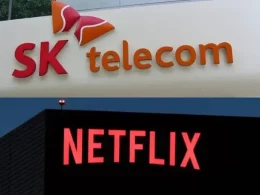In this age of globalization and digital transformation, managing distributed teams has become increasingly popular. With the rise of remote work, managers must now navigate communication challenges that come with geographically dispersed team members. Whether you’re a seasoned manager or new to the game, it’s essential to have effective communication strategies in place for meeting goals and ensuring success. In this blog post, we’ll explore key tactics and tips for communicating with your distributed team to foster productivity, collaboration, and engagement!
The Challenge of Managing Distributed Teams
Managing a distributed team can be a challenge. Here are some effective communication strategies for managing such teams:
1. Define clear roles and responsibilities.
Each member of the team should know their roles and responsibilities. This will help to avoid confusion and conflict within the team.
2. Set up regular check-ins.
Set up regular check-ins, either in person or via video conferencing, to ensure that everyone is on the same page. These check-ins should include an agenda and opportunities for each member to provide updates on their progress.
3. Use project management tools.
There are many project management tools available that can help you to effectively communicate with your team members and track their progress. Some popular options include Asana, Trello, and Basecamp.
4. Encourage open communication.
Encourage team members to openly communicate with one another, both in person and online. This will help to build trust and understanding within the team.
The Benefits of Effective Communication
In order to manage a distributed team effectively, good communication is key. There are many benefits to effective communication, including:
– improved team productivity
– better decision making
– reduced conflict
– greater clarity and understanding
Each of these benefits can help make distributed teams more effective overall. When everyone is on the same page and communicating effectively, it can make a big difference in terms of how well the team functions.
What is Effective Communication?
One of the most important aspects of managing a distributed team is effective communication. Without clear and concise communication, it can be difficult to maintain productivity and keep everyone on the same page.
There are a few key strategies that can help you communicate effectively with your distributed team:
1. Set clear expectations from the beginning. When you first start working with a distributed team, it’s important to set clear expectations for communication. This means defining how often you will check in, what methods of communication you will use, and what kind of response times you expect from team members.
2. Be proactive about communication. Don’t wait for problems to arise before you start communicating with your team. proactively checking in and keeping everyone up-to-date on project progress will help avoid potential issues down the line.
3. Use multiple channels of communication. Don’t rely on just one method of communication, such as email or instant messaging. Utilize video conferencing, project management tools, and even social media to stay connected with your team.
4. Encourage open and honest communication. It’s important that team members feel comfortable communicating openly and honestly with each other. Encourage this by creating an open and supportive environment where people feel comfortable sharing their thoughts and ideas.
5. Be patient and understanding. Distributed teams can often be located in different time zones, which can make coordinating schedules difficult at times. It’s important to be patient and understanding
The 5Cs of Effective Communication
The 5 Cs of Effective Communication are:
1. Clarity: When communicating with your team, be clear and concise. Avoid using jargon or technical terms that they may not understand.
2. Conciseness: Keep your messages short and to the point. This will help prevent misunderstandings and misinterpretations.
3. Correctness: Make sure your facts are accurate and your grammar is correct. This will help build trust and credibility with your team.
4. Completeness: Include all the relevant information in your messages so that your team has everything they need to know.
5. Consideration: Be considerate of others when communicating. This includes taking into account their time zones, schedules, and communication preferences.
Active listening
Active listening is a key communication strategy for managing distributed teams. By actively listening, managers can ensure that they are understanding what is being said and that the team members feel heard. Active listening also allows managers to provide feedback and ask clarifying questions.
Clear and concise communication
When it comes to communicating with a distributed team, clarity and conciseness are key. With team members in different time zones and often working remotely, it’s important to be as clear and concise as possible in all communications.
Here are some tips for clear and concise communication when managing a distributed team:
– Use simple language that can be understood by everyone on the team. Avoid jargon and technical terms that not everyone will be familiar with.
– Be clear about what you expect from team members and what the deadlines are for tasks.ambiguous or confusing instructions will only lead to frustration and delays.
– When sending written communications, proofread them before hitting send to avoid any typos or grammatical errors that could cause confusion.
– If there is ever any ambiguity about a task or instruction, don’t hesitate to reach out to the relevant team member (or members) for clarification. It’s better to clarify things upfront than to have them misunderstand and do something wrong.
By following these tips, you can ensure that your communications with a distributed team are clear, concise, and effective.
Maintaining open channels of communication
Maintaining open channels of communication is essential for managing distributed teams effectively. There are a number of ways to do this, including using communication tools like Slack or Zoom, setting up regular check-ins, and ensuring that everyone has a clear understanding of the team’s goals and objectives.
Slack is a great tool for keeping everyone on the same page and facilitating quick back-and-forth communication. You can set up different channels for different topics or teams, and use @mentions to ensure that key team members see important messages. Zoom is another great option for video conferencing and screen sharing, which can be helpful for remote team members who need to collaborate on projects.
Regular check-ins are also crucial for maintaining open communication channels. These can be weekly or biweekly calls or meetings where everyone touches base on what they’re working on and how they’re doing. This is a great time to address any issues or concerns that team members may have, and to make sure that everyone is still aligned with the team’s goals.
Finally, it’s important to ensure that everyone has a clear understanding of the team’s goals and objectives. If team members are unsure about what they should be working on or why certain decisions are being made, it can lead to frustration and confusion. By clearly communicating the team’s goals and objectives, you can help everyone stay focused and motivated.
Considering the context
The most effective communication strategies for managing distributed teams depend heavily on the context of the team and its members. There are a few key considerations to keep in mind when attempting to communicate effectively with a distributed team.
First, consider the time zones of your team members. It is important to be aware of when everyone is available and plan accordingly. If possible, avoid scheduling meetings or sending important communications during times when team members are likely to be unavailable.
Second, consider the culture of your team members. Distributed teams often span multiple countries and cultures, which can lead to misunderstandings and miscommunications. Be aware of cultural differences and try to bridge any gaps by using clear and concise language.
Third, consider the working styles of your team members. Some people prefer written communication, while others prefer oral communication. Some people like to receive frequent updates, while others prefer more sporadic updates. Be aware of these preferences and adjust your communication style accordingly.
By taking the time to consider the context of your distributed team, you can ensure that your communication strategies are as effective as possible.
Communicating with empathy
When you’re managing a distributed team, it’s important to be aware of the different communication styles and needs of your team members. One way to do this is by communicating with empathy.
Empathy is the ability to understand and share the feelings of another person. It’s an important skill for managers, because it allows you to see things from your team members’ perspective and understand their needs.
There are a few ways you can communicate with empathy:
1. Listen carefully to what your team members are saying.
2. Ask questions to clarify understanding.
3. Avoid making assumptions about what someone is thinking or feeling.
4. Reflect back what you’ve heard to show that you’re listening and trying to understand.
5. Put yourself in your team members’ shoes – try to see things from their perspective.
By communicating with empathy, you’ll build trust and rapport with your team, and create an environment where everyone feels comfortable sharing their thoughts and ideas.
Conclusion
In summary, effective communication is key to successfully managing distributed teams. With the right strategies in place, you can ensure that all team members feel heard and valued and that everyone is on the same page with regards to tasks and goals. Utilizing the strategies outlined in this article will help you keep your distributed team connected and productive despite geographical distance. Good luck!











